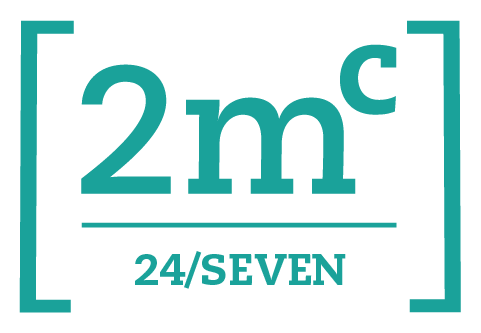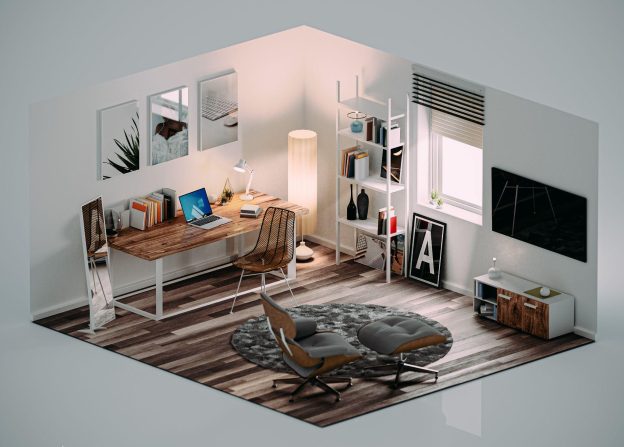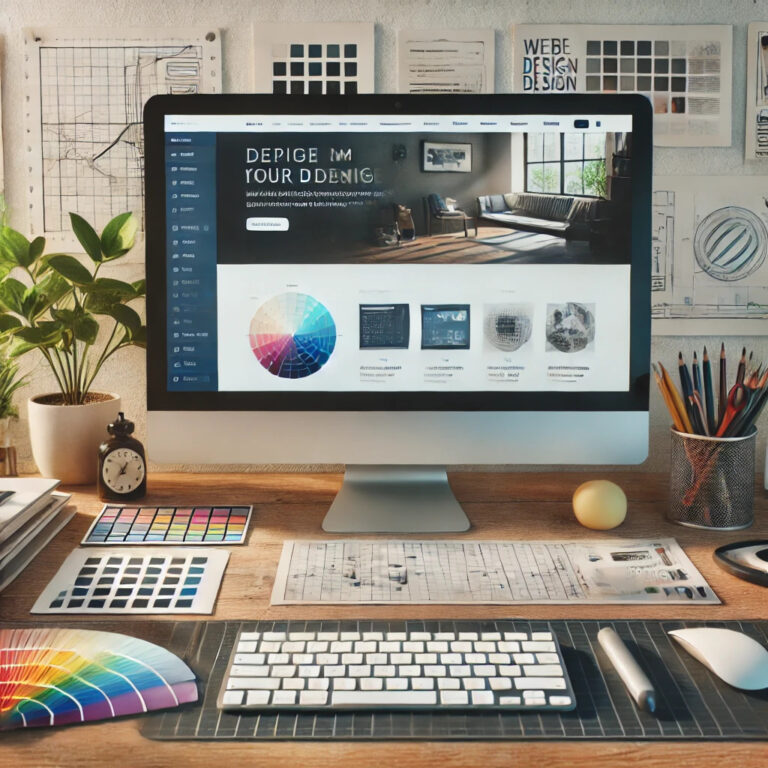In today’s digital age, 3D visualization brings life to static images and allows us to explore virtual spaces in a realistic and immersive manner. Whether you’re an architect, designer, marketer, or simply someone curious about the world of visuals, understanding the concept of 3D visualization can be highly beneficial.
This blog gives you an introduction to 3D visualization. Here we’ll delve into its definition, benefits, cost, and requirements of 3D visualization, providing you with a comprehensive overview of this exciting field. Let’s begin..
What is meant by 3D visualization?
3D visualization is also known as 3D rendering or computer-generated imagery (CGI). At its core, 3D visualization refers to the process of creating and presenting three-dimensional representations of objects or scenes using advanced computer software.
Through the use of specific techniques, these software are used to construct virtual models that mimic the real world with astonishing accuracy. By leveraging lighting, textures, materials, and realistic physics simulations, 3D visualization enables users to interact with and explore virtual environments as if they were physically present in the real world..
What is the Benefit of 3D Visualization
In today’s world, the benefits of 3D visualization are numerous and truly remarkable. This cutting-edge technology has revolutionized various industries, bringing forth a multitude of advantages that extend far beyond what was previously possible.
Let’s look at some of them:
Enhanced Communication and Decision-Making
One of the primary benefits of 3D visualization lies in its ability to facilitate effective communication and understanding.
Whether it’s a complex architectural project or a new product concept, 3D visualization offers a visually engaging medium that can be easily comprehended by stakeholders, clients, or end-users. By offering a clear and immersive representation, 3D visualization enhances collaboration, reduces misunderstandings, and accelerates the decision-making process.
For example, architects and interior designers can utilize 3D visualization to present their ideas in a visually captivating manner.
.

By showcasing their concepts through realistic virtual models, they empower clients to better grasp and visualize the final product. This not only improves communication but also enables more informed decision-making, as clients can evaluate and provide feedback on the virtual representation before any physical construction begins.
Accelerating Design Iterations and Optimization In Manufacturing
In the realm of manufacturing, 3D visualization plays a crucial role in accelerating design iterations and optimization.
This is beneficial because engineers can now create things better and faster. By harnessing the power of 3D visualization technology, engineers can create virtual prototypes instead of physical ones, leading to significant time and cost savings.
These virtual models enable engineers to conduct extensive testing, iterate rapidly, and optimize their designs before committing to the manufacturing process.
Essentially, it provides a virtual sandbox where engineers can experiment and fine-tune their ideas, ensuring a higher level of precision and functionality in the final product.
.
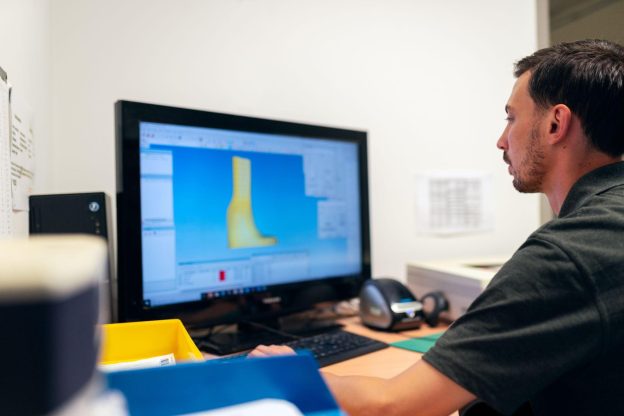
Immersive Marketing and Advertising
Another compelling benefit of 3D visualization is its role in marketing and advertising. By harnessing the power of realistic and immersive virtual environments, businesses can showcase their products or spaces in an unprecedented way, capturing the attention and interest of potential customers.
Take the example of furniture companies. Through 3D visualization, they can present their furniture products within virtual room setups.
.
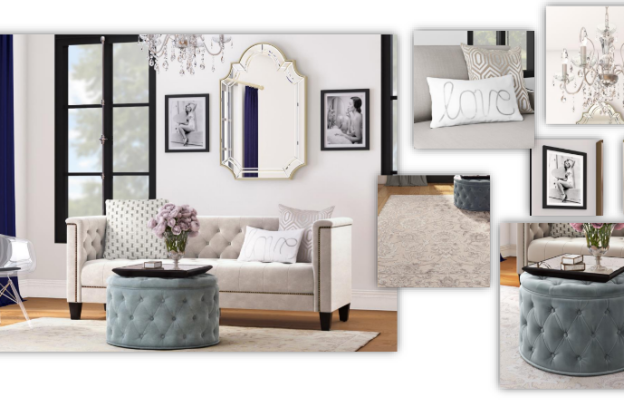
Potential buyers can experience the furniture in a realistic context, visualizing how it would look and fit within their own homes. This immersive representation not only attracts customers but also sets businesses apart from their competition by offering an interactive and engaging experience.
Bringing Designs to Life
In addition to its practical advantages, 3D visualization brings designs to life with a level of realism that surpasses traditional 2D methods. By accurately replicating lighting, textures, and materials, virtual models become vibrant and visually stunning, allowing clients or viewers to experience and evaluate the final product before it even enters production.
For instance, architects can showcase their designs with accurate lighting conditions, enabling clients to witness the interplay of natural light throughout the day. This realistic portrayal helps clients envision how the building will look and feel, further enhancing their understanding and confidence in the design..
What is the difference between 2D and 3D visualization?
The main difference between 2D and 3D visualization lies in the dimensionality of the imagery.
In 2D visualization, objects are typically represented through drawings, sketches, or flat images. While this approach is suitable for conveying simple concepts or designs, it often lacks the spatial awareness and depth perception provided by 3D visualization.
On the other hand, 3D visualization creates virtual environments with depth, enabling users to explore and interact with the simulated spaces. It provides a more immersive and realistic experience by incorporating elements like lighting, shadows, textures, and perspective. This is particularly useful in architectural design, product development, and video game development..
What does 3D visualization cost?
The cost of 3D visualization can vary significantly depending on several factors. These include the complexity of the project, the level of detail required, the number of objects or scenes to be visualized, and the specific requirements of the client. Additionally, the timeframe for completion and the intended purpose of the visualization may also affect the cost.
Simple visualizations, such as basic product renderings, can start from a few hundred dollars. However, for larger and more complex projects like architectural visualizations or animated walkthroughs, the cost can range from a few thousand to tens of thousands of dollars.
It is important to consult with professionals and obtain detailed quotes to understand the cost associated with your specific requirements.
It is important to note that the costs can also be influenced by the reputation and experience of the visualization studio or artist. Established professionals with a proven track record may charge higher fees, reflecting their expertise and the quality of their work.
So that you can get a feel of what should be fair market prices of different visualization services, we’ve made our pricing page public. Feel free to check it out so you can get an idea of the costs of 3D visualization..
What do I need to supply to get successful results?
To achieve successful results there are a few essential elements that you need to provide:
Clear and detailed brief
A well-defined brief outlining your objectives, expectations, and specifications is crucial. It should include information about the subject matter, desired style, specific features or functionalities, and any reference materials or examples that can help convey your vision effectively.
Technical information
If applicable, providing technical data, measurements, or CAD files of the object or space to be visualized will aid in creating accurate and realistic virtual models.
Collaborative feedback
Collaboration and timely feedback play a vital role in ensuring the final visualization aligns with your vision. Promptly reviewing and providing feedback on drafts or work-in-progress versions helps maintain the desired direction and quality throughout the process.
Patience and flexibility
3D visualization is a creative process that requires time and iteration. Being patient and open to adjustments and refinements will contribute to achieving the best possible results.
Conclusion
3D visualization offers a powerful means of communication, exploration, and presentation in various fields. With its ability to convey complex ideas, explore design options, and create immersive experiences, it has become an indispensable tool for architects, designers, filmmakers, and many others.
By understanding the benefits, differences, and costs associated with 3D visualization and providing the necessary elements for success, you can unlock its full potential and bring your ideas to life with astonishing realism..
